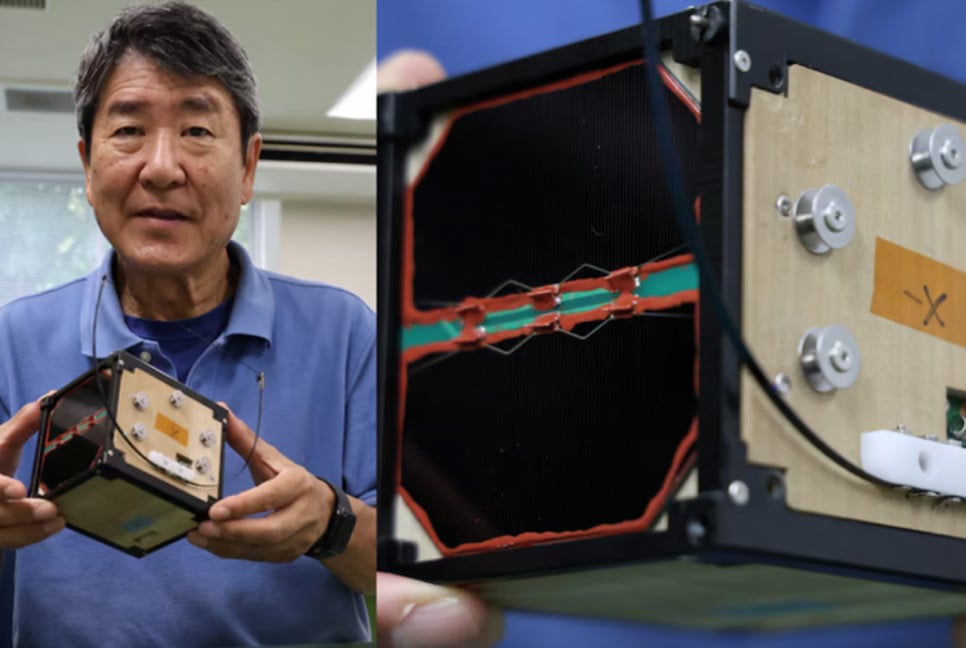Researchers from Japan launched the first wooden satellite into space, in an early test of using timber in lunar and Mars exploration on Tuesday.
LignoSat, created by Kyoto University and Sumitomo Forestry, will be launched on a SpaceX mission to the International Space Station, from where it will be deployed into orbit at a height of around 400 kilometers (250 miles) above Earth.
LignoSat, named after the Latin word for "wood," is a palm-sized satellite designed to showcase the potential of this renewable material as humanity explores space living.
“With timber, a material we can produce by ourselves, we will be able to build houses, live and work in space forever,” said Takao Doi, an astronaut who has flown on the Space Shuttle and studies human space activities at Kyoto University.
With a 50-year plan of planting trees and building timber houses on the moon and Mars, Doi’s team decided to develop a NASA-certified wooden satellite to prove wood is a space-grade material.
“Early 1900s airplanes were made of wood,” said Kyoto University forest science professor Koji Murata. “A wooden satellite should be feasible, too.”
Wood is more durable in space than on Earth because there’s no water or oxygen that would rot or inflame it, Murata added.
A wooden satellite also minimizes the environmental impact at the end of its life, the researchers say.
Decommissioned satellites must re-enter the atmosphere to avoid becoming space debris. Conventional metal satellites create aluminum oxide particles during re-entry, but wooden ones would just burn up with less pollution, Doi said.
“Metal satellites might be banned in the future,” Doi said. “If we can prove our first wooden satellite works, we want to pitch it to Elon Musk’s SpaceX.”
Industrial application
After a 10-month experiment on the International Space Station, researchers discovered that honoki, a type of magnolia tree native to Japan and traditionally used for sword sheaths, is the most suitable wood for spacecraft.
LignoSat is made of honoki, using a traditional Japanese crafts technique without screws or glue.
Once deployed, LignoSat will stay in the orbit for six months, with the electronic components onboard measuring how wood endures the extreme environment of space, where temperatures fluctuate from -100 to 100 degrees Celsius (-148 to 212 degrees Fahrenheit) every 45 minutes as it orbits from darkness to sunlight.
LignoSat will also gauge wood’s ability to reduce the impact of space radiation on semiconductors, making it useful for applications such as data center construction, said Kenji Kariya, a manager at Sumitomo Forestry Tsukuba Research Institute.
“It may seem outdated, but wood is actually cutting-edge technology as civilisation heads to the moon and Mars,” he said. “Expansion to space could invigorate the timber industry.”
Source: CNN
Bd-pratidin English/ Afia




































































